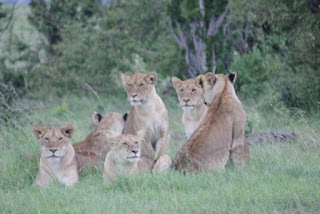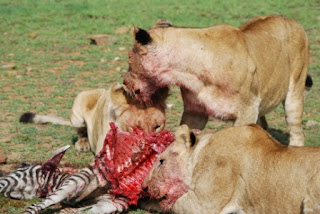People who talk too much make me nervous. I have met that person many times in many different locations throughout my life. Given any topic on which to form an opinion, or merely a willing audience, and the talking starts. I am that guy on more than too many occasions. If someone is listening the convention is to keep talking. Although, I enjoy a good conversation, there is something alluring about a quiet place in nature to escape for a bit. The Mara seems like that sort of place.
When I first arrived, I thought that surely the Mara, isolated and bound from human intrusion by a formidable river, an international boundary, an escarpment, and a vigilant conservancy, would be a quiet retreat. The Mara is seldom quiet. It has inspired me as much as it has challenged me, and I have yet to figure most of it out. But in my time here I have been the audience to an ensemble of noise (and I have probably talked more than necessary as well). Some of what I have heard in the Mara, I will reflect on fondly, and the visual experience is far from complete because there is much to learn from what is heard…the key is to be quiet enough to listen.
The sounds I think I will not miss after leaving the Mara include: the cold crank of tired field vehicle that has no will to start; the whining whur of mosquitoes escorting you from the lab tent to the bathroom and back again during the wet season; the chiming fruit bat ‘alarm clock’ calls of Talek camp that are most loud exactly one hour before you actually need to wake up; a night long serenade of baseline thumping from the Serena hotel staff parties; the broken reception of a internet call or a far too expensive phone call to family or friends at home; the accelerating fan of an inverter signaling the end of your available power supply as the solar system nears over draw; the squabbling of baboons that have just raided your store tent; the midnight crunching of jerry cans (full of water or fuel) suffering loss of structural integrity to the curiosity of wandering hyenas.
On the other hand I think what I will miss the most being away from the Mara are also sounds: the churning stomach acids of a hippo grazing at arms length on the other side of the tent wall at night; the exploratory and experimental attempt of a 4 week old hyena cub whooping when excited by some unknown ecstasy at the den; the whistle of white-faced whistling ducks overhead (probably the longing for the 2011 duck season forever gone); the roar of a nearby (less than 10m) lion that you can feel rattle your diaphragm, the pop of champagne bottles at the end of a incredible balloon flight just before an exquisite breakfast in good company; the thermo-regulating? or competitive signaling? dewlap vibrating from my tent’s resident skink or gecko (not sure which one or why they vibrated the tent tarp); the Tusker inspired stories of grandeur and danger shared by Ian our mechanic; and my favorite sound… the territorial chugging, like sawing wood, of a proud male leopard reminding you whose camp you are visiting, but otherwise whom silently cruises through camp unnoticed with the exception of a brief eye shine if you dare to use the bathroom after dark.
And there are sounds which I have not formed such a strong opinion about, but they do exist and are worth paying attention to: the trumpet of an elephant suggesting that you have encroached too close; the sort of flexing hiss of an annoyed velvet green night adder; the screech of a fleeting plover that explodes in your headlights just barely avoiding being hit on the road, the asynchronous bellow of thousands of wildebeest happy to have crossed the river but fearing the gauntlet of hyenas and lions to come; the giggling, squealing, whooping, and yelling of hyenas sorting feeding rights at a kill.
Of course there are more sounds, but an exhaustive list would be just that…for both audience and myself. Anyway I need to finish packing but I am sure when I next talk of my time in the Mara I will have a lot to say. I wonder if I have been quiet enough to listen and learn anything? Alone in the middle of nowhere, the middle of the Mara, and over all that other noise the one person I could always hear was me. I think I/we talk too much and there is a lot to be heard in the quiet of nature. People who talk too much make me nervous… but thanks for listening.




























